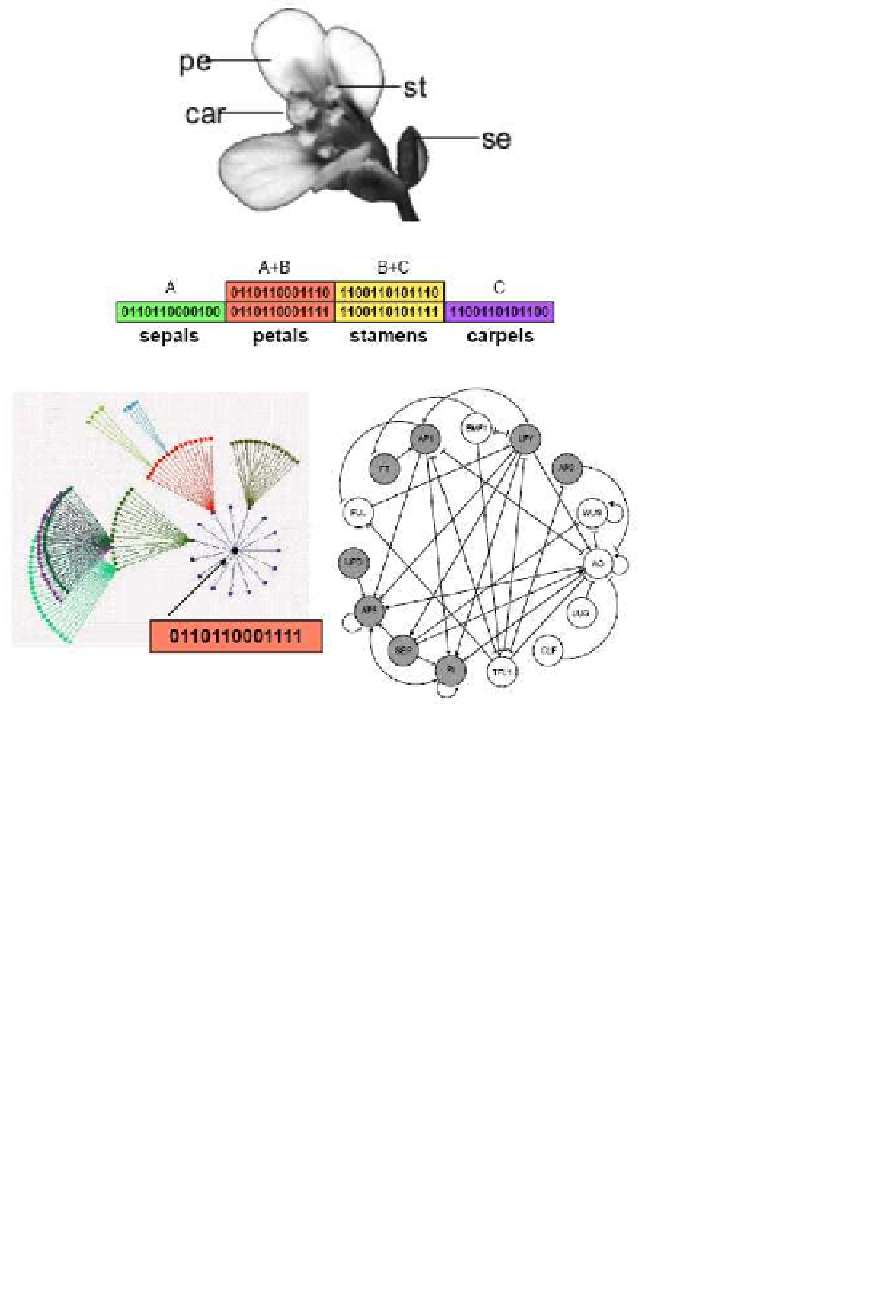Information Technology Reference
In-Depth Information
Fig. 5.6. Arabidopsis thaliana. ABC and GRN model for the specication of oral organ primor-
dial cells. This plant species has the stereotypical oral morphology with sepals, petals, stamens
and carpels that emerge sequentially from the periphery to the central part of the ower. A
GRN model that integrates available experimental data for fteen genes or proteins (or protein
complexes), represented by nodes, and their regulatory interactions (activations - arrows; and re-
pressions - blont-end edges). This GRN was modeled as a Boolean system and it converges to ten
xed-point attractors. Four of them correspond to cells in the inorescence meristem. The oral
meristems (buds) form from the anks of the inorescence meristem (see text). Within three days
of their formation, the oral buds are partitioned into four regions, each comprised of the primor-
dial cells that will form the oral organs. The other six attractors of the GRN are shown here: one
corresponds to the combinations of gene activation states characteristic of sepal primordial cells
(green), two correspond to petal primordial cells (red; one with the gene UFO turned \on" and the
other one with this gene turned \o"), two to stamen primordial cells (yellow; one with the gene
UFO turned \on" and the other one with this gene turned \o"), and one to carpel primordial
cells (purple). The basin of attraction that corresponds to one of the petal attractors is illustrated
and the corresponding attractor shown. The genes LUG and CLF are not listed in the attractors
because they remain ON (1) at all times in all types of primordial oral cell types modeled here.
In the network, the nodes that are ON in the exemplied petal attractor are in grey, all others are
in white.








